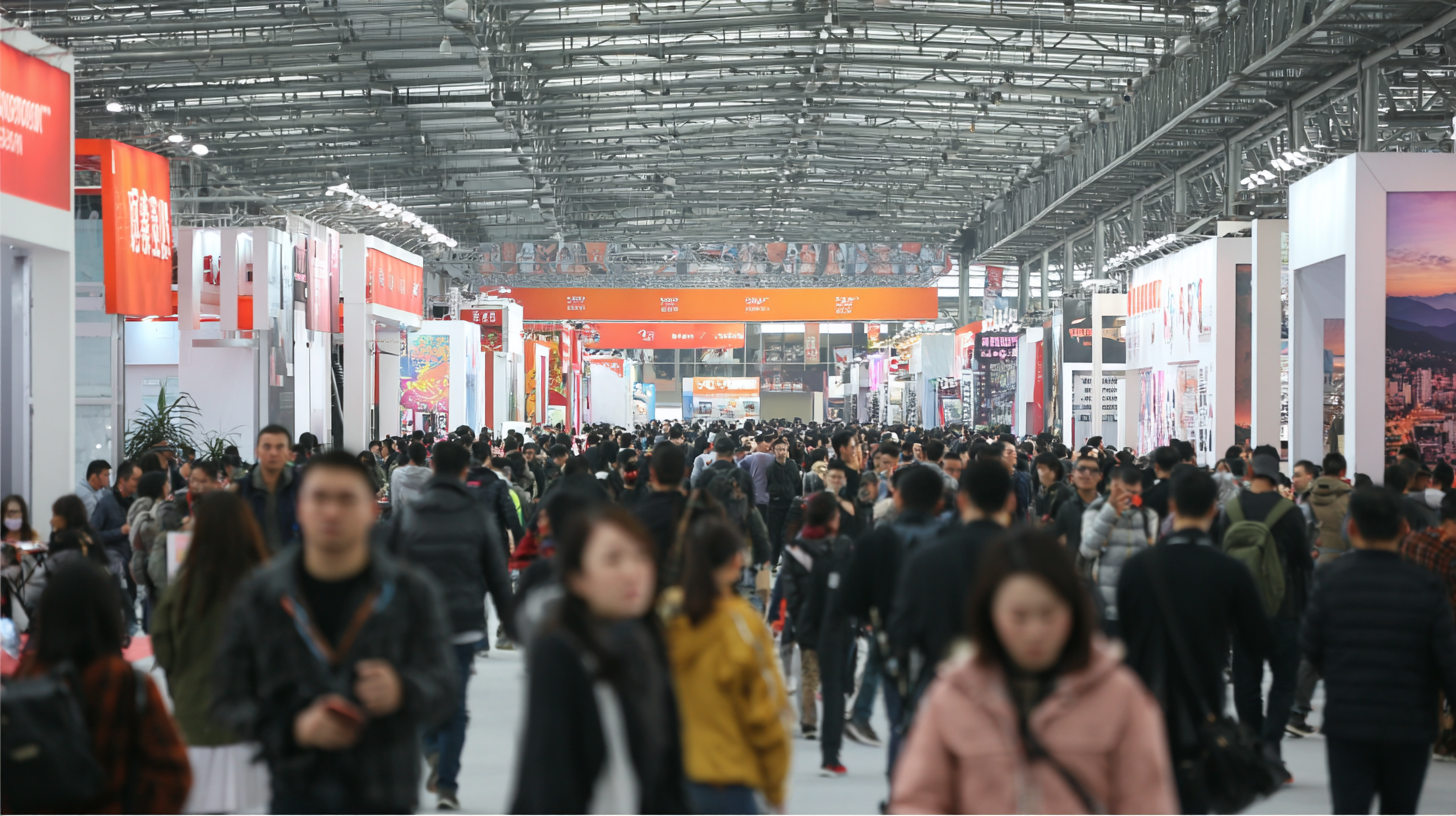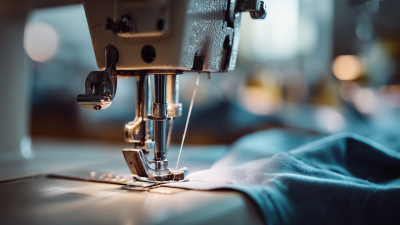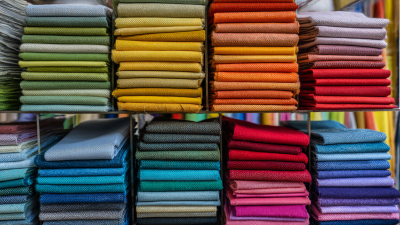- +86 13957580925
- 510515850@qq.com
- adela0928@163.com
The global textile industry is undergoing a significant transformation, with polyester emerging as a dominant fabric choice due to its versatility, durability, and cost-effectiveness. As highlighted in the recent 2023 Textile Outlook report, the polyester market is projected to grow at a CAGR of 6.7%, reaching a staggering $235 billion by 2027. This trend is expected to be particularly evident at the 138th China Import and Export Fair in 2025, where innovations in "Wearing Polyester" will take center stage. The fair serves as a platform for industry leaders to showcase cutting-edge polyester blends and sustainable manufacturing practices, reflecting a growing consumer preference for eco-friendly apparel. As brands pivot towards using recycled polyester in their collections, this event will provide valuable insights into the future of wearing polyester, enhancing understanding of both market dynamics and consumer trends driving this fiber's popularity.

The 138th China Import and Export Fair 2025 has emerged as a pivotal venue for discussions on the role of polyester in sustainable fashion. As the global textile industry seeks to mitigate its environmental impact, innovations in polyester production are gaining prominence. According to a report by Textile Exchange, polyester continues to dominate the global fibers market, accounting for approximately 52% of total fiber production. This dominance underscores the necessity for sustainable practices within this sector, as polyester, while versatile, has been critiqued for its reliance on fossil fuels and its contribution to microplastic pollution.
At the fair, exhibitors showcased a variety of sustainable polyester innovations, such as recycled polyester derived from post-consumer plastic bottles. This trend aligns with the growing consumer demand for eco-friendly products, which a McKinsey report highlights, revealing that 66% of consumers are willing to pay more for sustainable brands. The exploration of bio-based polyester alternatives is also gaining traction, potentially reducing dependence on petroleum-based resources. The integration of such materials into mainstream fashion collections signifies a transformative shift towards a more sustainable future in the textile industry, promising substantial environmental benefits while maintaining the appealing attributes of polyester.
The 138th China Import and Export Fair in 2025 is set to unveil significant insights into the polyester market, particularly focusing on demand and production trends. As sustainability becomes increasingly pivotal in the fashion and textile industries, projections indicate a robust growth trajectory for polyester, buoyed by advances in recycling technologies and the development of bio-based polyesters. Industry experts predict that by 2025, the global polyester demand will rise sharply, driven by the growing consumer preference for durable and versatile fabrics.

Production trends also reflect a shift towards more environmentally responsible practices. Manufacturers are investing in innovative processing techniques that minimize waste and energy consumption, which is crucial as industries strive to meet sustainability targets. Additionally, the rise of circular economy models is expected to fuel the recycling of polyester, allowing for more sustainable production cycles. Overall, the insights from the fair will highlight not only the economic potential of polyester but also its evolution towards a more sustainable future.
The 138th China Import and Export Fair in 2025 showcased significant advancements in polyester recycling, addressing the growing demand for sustainable textile solutions in the fashion industry. Industry leaders highlighted that the global recycled PET bottles market is projected to experience a robust CAGR of 9.74% from 2025 to 2034, reaching approximately USD 6.16 billion. This surge is indicative of a broader shift towards eco-friendly packaging and sustainable materials, aligning with consumer preferences for green products.

Moreover, the global recyclable plastic market is set to expand considerably, with projections estimating it will reach approximately USD 195.92 billion by 2034. This growth reflects the increasing urgency for innovative recycling technologies and sustainable practices across various sectors. The discussions at the fair emphasized the essential role of technological advancements in improving recycling processes, which are crucial for reducing plastic waste and advancing circular economy principles. As companies invest in research and development, the future of polyester and its recycling processes looks promising, paving the way for a cleaner, more sustainable industry.
At the 138th China Import and Export Fair in 2025, consumer attitudes towards polyester have taken center stage, reflecting a growing eco-consciousness in fashion and textiles. Recent studies indicate that over 60% of consumers are now prioritizing sustainability when making purchasing decisions, demonstrating a significant shift in mindset. A report by the Global Fashion Agenda states that the fashion industry is responsible for 10% of global carbon emissions, and as more consumers become aware of these facts, their demand for eco-friendly materials increases.
Polyester, while widely used for its durability and versatility, faces a critical evaluation from today's environmentally aware shoppers. According to the Textile Exchange’s 2022 report, the market for recycled polyester is expected to grow by 15% annually, as brands are pressed to offer more sustainable alternatives. The trade fair highlighted several innovative brands that are adopting circular economy principles by utilizing recycled polyester and reducing waste. As the conversation around sustainability continues to evolve in the textile industry, it is clear that consumer preferences are steering brands towards a greener future, with polyester at a pivotal crossroads.
The future of polyester manufacturing is significantly influenced by evolving global regulations aimed at promoting sustainable practices. As highlighted in recent reports, the textile industry faces mounting pressures to reduce environmental impacts, particularly those related to carbon emissions and waste. With a noted 20% increase in fiber production emissions since 2019, the urgency for compliance with stricter regulations is palpable. Manufacturers must innovate to meet these standards, focusing on green production methods that minimize ecological footprints while maintaining efficiency and cost-effectiveness.
Furthermore, legislative changes, particularly within the European Union focusing on fast fashion, are reshaping operational norms across the industry. The directive aims to curtail excessive clothing production and waste, compelling brands to reassess their supply chains and implement sustainable practices. Companies will need to navigate these regulations by investing in sustainable materials and technologies, developing comprehensive sustainability strategies, and enhancing transparency in sourcing. This shift not only addresses regulatory compliance but also aligns with growing consumer demand for environmentally responsible products. In essence, the next five years will necessitate a collaborative approach among stakeholders to innovate and adapt the polyester industry to meet both consumer expectations and regulatory requirements.






